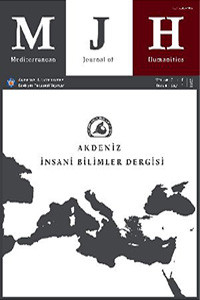Öz
The current age of technology and globalization allowed people from various cultures to encounter one another more than ever. In this context, English has emerged as a world language which is used from international trade to international media, and contributed to the increase of communication among nations. Thus, intercultural communication concept which investigates the process of communication among people of various cultures has gained importance. This paper first illustrates the communication studies' (psychological) approach to intercultural communication by discussing how they define culture, and communication, and how they approach intercultural communication. Second, it explains the discourse approach to intercultural communication and discusses how the discourse approach differs from the communication studies' approach. Third, it demonstrates the critical approaches to using English for intercultural communications. Finally, it discusses how intercultural communication can be addressed in language classrooms.
Anahtar Kelimeler
Kaynakça
- Alptekin, C. (2002). Towards intercultural communicative competence in ELT. ELT Journal, 56, 57-64.
- Argyle, M. (1991). Intercultural communication. In L. A. Samovar, & R. E. Porter (Eds.), Intercultural communication: Reader. (pp. 32-45). Belmont, CA: Wadsworth Publishing.
- Barna, L. M. (1991). Stumbling blocks in intercultural communication. In L. A. Samovar, & R. E. Porter (Eds.), Intercultural communication: Reader. (pp. 345-353). Belmont, CA: Wadsworth Publishing.
- Barnlund, D. C. (1991). Communication in a global village. In L. A. Samovar, & R. E. Porter (Eds.), Intercultural communication: Reader. (pp. 22-31). Belmont, CA: Wadsworth Publishing.
- Brutt-Griffler, J., & Samimy, K. K. (2001). Transcending the nativeness paradigm. World Englishes, 20, 99-106.
- Byram, M. (1997). Teaching and Assessing Intercultural Communicative Competence. Clevedon: Multi- lingual Matters.
Ayrıntılar
| Birincil Dil | Türkçe |
|---|---|
| Konular | Çeviribilim, Dil Edinimi |
| Bölüm | Araştırma Makaleleri |
| Yazarlar | |
| Yayımlanma Tarihi | 30 Haziran 2011 |
| Yayımlandığı Sayı | Yıl 2011 Cilt: 1 Sayı: 1 |
| Adres: Akdeniz İnsani Bilimler Dergisi Akdeniz Üniversitesi, Edebiyat Fakültesi 07058 Kampüs, Antalya / TÜRKİYE | E-Posta: mjh@akdeniz.edu.tr |


